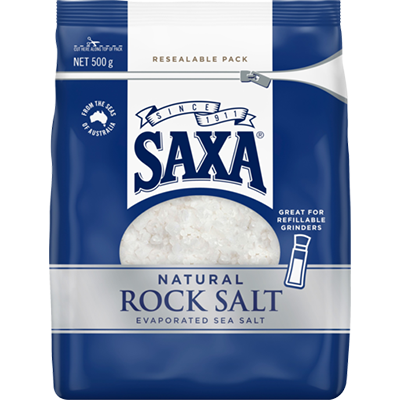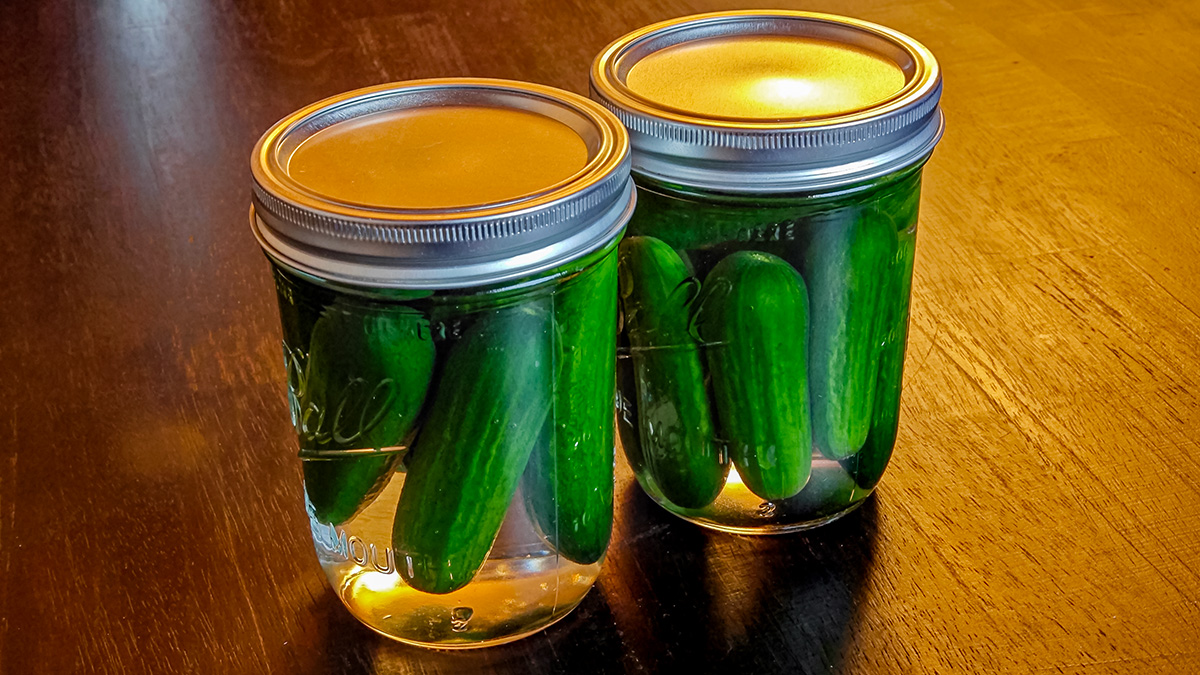Clem's
Pickled Baby Cucumber
I had some baby
cucumbers left over from making a salad and seeing other people
enjoy pickled cucumbers, I thought I would make some for myself.
It's an easy process although hygiene in preparation and an
awareness of food safety needs to be forefront in making stored
products such as these.
Food spoilage and
poisoning microorganisms thrive whenever there is sufficient
water activity (a technical measurement of the amount of water
available for metabolic processes in cells). Make water activity
low and microbes cannot grow to spoil and taint food products.
Though there is plenty of apparent water around, a brine has low
water activity due to the presence of salt molecules. This the
basis for pickling - sufficient salt in the water which is used
to pickle the food. Add other growth-deterrent factors to salt
such as sugar (acts like salt to reduce water activity although
too little acts as a growth promotant - microbes use it as a
food source), acidity, specific spices and cold storage,
and you will have a good means to extend the shelf-life of
foods. Pickling is practiced in many cultures. In Malaysia,
cucumber is often pickled in a curry-flavoured pickle called
achar.
Baby cucumbers which have been pickled in brine and
allowed to lacto-ferment (halophilic Lactobacillus spp.
bacteria are the agents), are known as gherkins in the UK and its
major former colonies.
Here is my method for brine pickling cucumber.
INGREDIENTS
- Baby cucumbers in
sufficient quantity to fill two 250 mL (or similar) Mason
jars.
You can try larger cucumbers but cutting these down to fit the jars.
However, the resultant level of crunchiness after pickling may be different from intact cucumbers as in this recipe.
- Natural sea salt.
This is salt which has not been iodized or had agents added e.g. Sodium (E535), Potassium (536) or Calcium (E538) Ferrocyanides as anti-caking agent; Sodium Aluminosilicate (E554) or Magnesium Carbonate (E504) to make salt free-flowing.
This is the natural sea salt which I used:

Iodine, if present may impart a taste to the pickle and it may also discolour the product if starch is present (remember the school lab test where we dropped iodine solution onto to a starchy material and the latter turns blue/purple?). Since a lot of salt is used, it is less desirable to use salt which has additives as the latter will end up in the pickled product in larger quantities than if the salt is merely used as a condiment.
- Vinegar (your
choice of white or other types).
- Sugar.
- OPTIONAL: Herbs and
spices e.g. dill; pepper.
METHOD
- Wash the baby
cucumbers and let them dry (no adherent water visible).
- To a saucepan, make
the pickling solution by adding:
- 1 cup (240 mL)
of water.
- 1 cup of
vinegar.
- 2 table spoons
(55 g) of natural salt.
- 1 table spoon
of sugar.
- 1 cup (240 mL)
of water.
- Heat the saucepan
gently to help dissolve all the solids.
- Allow the pickling
solution to cool down to room temperature.
- Place the baby
cucumbers into the Mason jars, arranging them to fit.
- Add the pickling
solution to the jars.
Make sure that the pickling solution covers every cucumber entirely.
- Cap the jars and
place them in the refrigerator.
- The baby cucumber pickle will be ready to eat in two days and can keep for several months in the jar in the refrigerator.

Baby cucumbers at the start of pickling in 250 mL Mason
jars
Enjoy!
04 May 2024
Created by Clem Kuek
